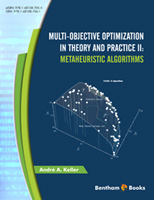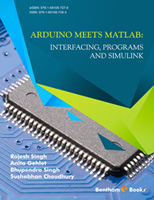Many books have been written on Enterprise Architecture (EA). However, despite all the attention that EA has received over the last few years, there is little help for the EA professional on successfully running an EA programme. The literature is full practical yet general advice—‘understand the limitations’, ‘identify bottlenecks’, ‘communicate with the business’—but provide little direction on how to achieve these worthy goals.
If you are an enterprise architect faced with the prospect of using EA to deliver value to the business, then how do you structure your programme of work? How do you set the scope? Where do you start? What problems are you likely to find? Can you avoid them? What tools can you use? How do you communicate with the business to ensure that they are engaged and support you for the duration?
Frameworks such as TOGAF propose a sequence of steps appropriate to conduct EA, but these processes alone do not provide sufficient practical guidance to an EA team. And failed EA projects keep accumulating.
Successful EA projects—from small, through medium to large engagement—don’t aim to simply to apply a framework or technique. Instead they work with the business to interpret their strategy, and make sure that IT helped them achieve their goals. Most importantly, the business is always kept in the loop and engaged as a partner, rather than being lectured to on what IT should do for them.
Frameworks are valuable tools as they provide us with a mechanism to ensure consistent quality across complex engagements, but they are not enough to navigate the treacherous waters of a sizeable organisation. Based on our experience we developed an approach and collection of tools that EA practitioners should able to apply to their own work to establish, refine, control and manage EA successfully. We present here a model for undertaking an EA exercise based on a cycle of alignment, elaboration and governance that can be naturally blended with the standard EA frameworks.
The phrase ‘Enterprise Architecture’ means different things to different people. Is it the content of EA? Is it what an enterprise architect does? Does it encompass all architecture? Is it the process of running an EA programme or practice? Behind fuzziness surrounding the expression, there lies a deeper malaise; fuzziness around what the enterprise architect needs to do – how they can make a difference.
The position of an enterprise architect is a privileged one, but all too often this privilege is wasted by pushing a favourite technology barrow; taking refuge in visually appealing diagrams; or becoming the organisational change police. How an EA adds value in his or her position is unanswered for many organisations.
The title of this book includes the phrases ‘how to’ and ‘successful’. In our view, a ‘successful’ EA must help achieve a business achieve the goals the business has set for itself, while ‘how to’ is provided by the tools and techniques used to do achieve these goals. We establish realistic, grounded objectives for EA and focus on helping IT use EA to deliver benefits to the business that it is a part of, while ensuring that the exercise enjoys continued support of all stakeholders. Although we focus on delivering business benefits, we do not set business strategy: by and large the strategic goals of the enterprise as a given, though IT may work together with the business to clarify strategic drivers. In this, we depart from the traditional approach of IT and make IT, via EA, an active participant throughout the business planning process.
Our motto can be expressed as:
To be successful and maintain stakeholder support, the enterprise architect must:
• Communicate in business terms, and not technical jargon
• Deliver value via tangible, demonstrable business benefits
• Provide timely and pragmatic solutions that work within the business’s time and resource constraints
|
How to do this is the main focus of this book.





